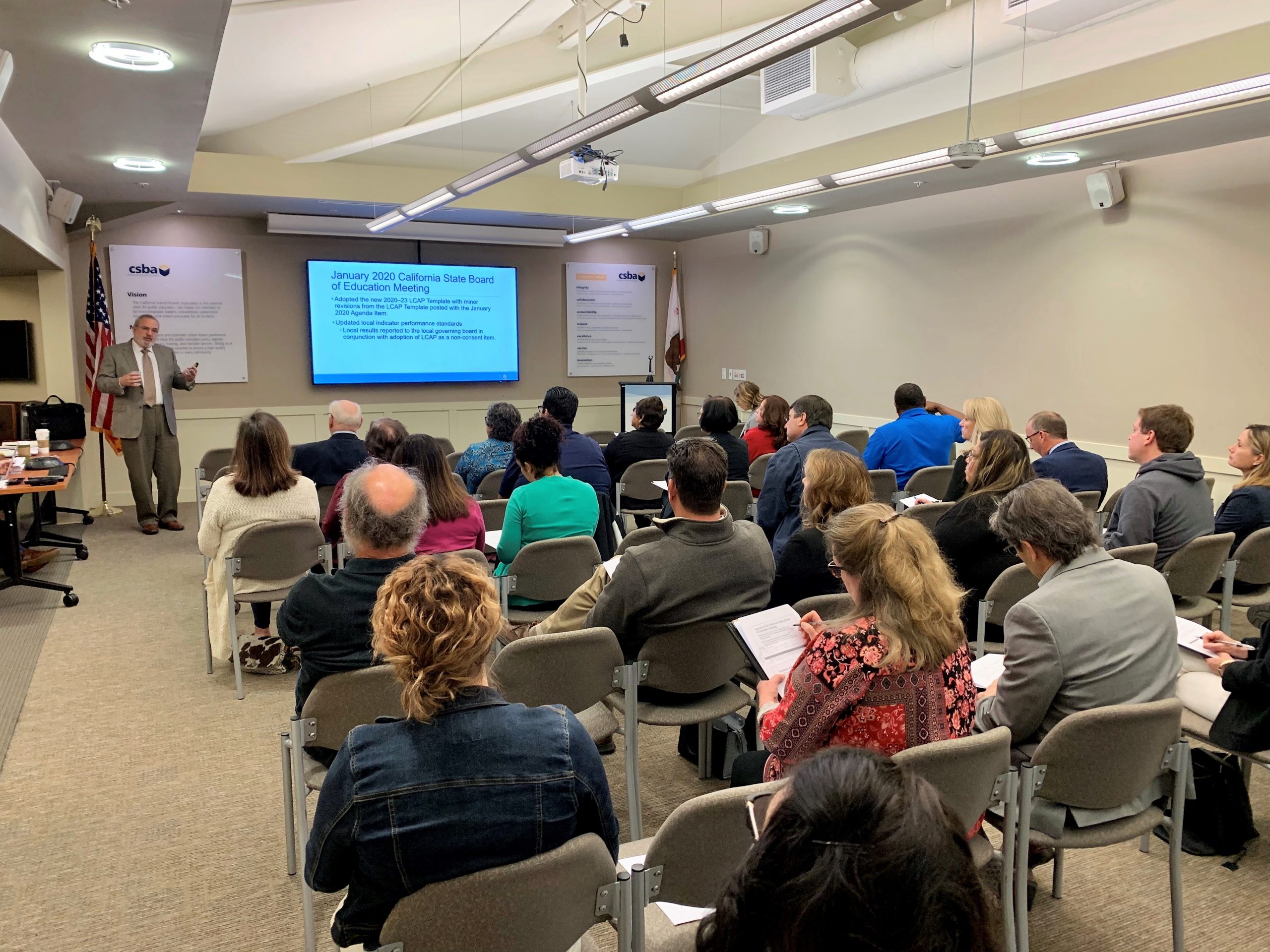As part of the rollout of the new Local Control and Accountability Plan template, CSBA hosted a free training for school board members and other education leaders at its offices in West Sacramento on Monday, Feb. 25. More than 80 people turned out to learn about the latest iteration of the three-year planning document that is at the heart of improving student outcomes at the local educational agency level.
Adopted by the State Board of Education in January, the template aims to simplify and shorten the lengthy document by moving complicated language from the template itself to the accompanying instructions section and by introducing easy-to-read expenditure tables. In the past, parent, community and advocacy groups have expressed concerns that LCAPs have been too large, confusing and make it difficult to track expenditures and services for student groups that generate additional funds under the Local Control Funding Formula.
At CSBA’s training, Jeff Breshears, administrator of the Local Agency Systems Support Office at the California Department of Education, said the addition of expenditure tables was well received during the template’s six-month development process. “The parents said, we can see, in one sheet, those resources that are being dedicated to our students in greatest need,” he said. The inclusion of expenditure tables could also reduce the length of most LCAPs by about half, he added.
While a shorter LCAP is welcome, several training attendees from small or rural districts advised Breshears that the task will likely remain an arduous one without dedicated staff to complete the document.
At the direction of the CDE and the State Board, Breshears and his team are on a “roadshow” to inform education leaders, parent groups and organizations such as CSBA about the new template and its ramifications. Beyond simplicity and transparency, the new template looks to improve upon the process for meaningful stakeholder engagement. “That’s huge on the radar of the State Board of Education,” Breshears said, citing a September 2019 meeting when members shared serious concerns about a lack of meaningful engagement across the state.
By more clearly outlining expectations for stakeholder engagement processes and their documentation, the new LCAP template moves away from enabling a “checkbox” mindset, Breshears said. “It allows them to tell a story rather than that compliance mindset that we are trying to get away from,” he said.
CSBA Governance Services educators and consultants Daryl Camp and Teri Vigil were also on hand to answers questions from attendees and to share important tips and resources. Of particular interest and usefulness to board members is CSBA’s May 2019 governance brief, “Six Essential School Board Roles in LCAP Implementation and Development.”
Vigil is an 18-year member of the Fall River Joint Unified School District board and co-facilitator of the professional learning network that produced the brief. She noted there is a vast difference in how involved board members are with the LCAP process, depending on their local circumstances. For example, some board members attend stakeholder meetings while others only sign off on the final document. Vigil also pointed to several examples of strong stakeholder engagement outlined in the brief and discussed in the network (several of these strategies are also outlined in a recent feature story in California Schools magazine).
Meanwhile, Camp, a first-year superintendent at San Lorenzo USD formerly in the same role in Riverbank USD, encouraged LEAs with separate strategic plans and LCAPs to consider more closely aligning the two or simply consolidating them into one item.
Breshears also reminded attendees that school districts and county offices of education must post a link to their LCAP prominently on the home page of their websites. The document’s electronic template is also now online after several weeks of delays. Board members with additional questions can email the CDE team at LCFF@cde.ca.gov





